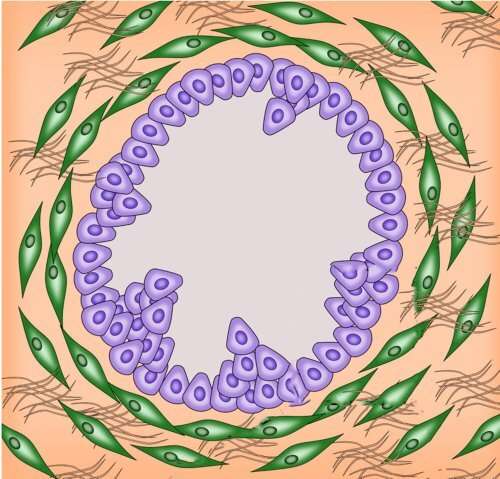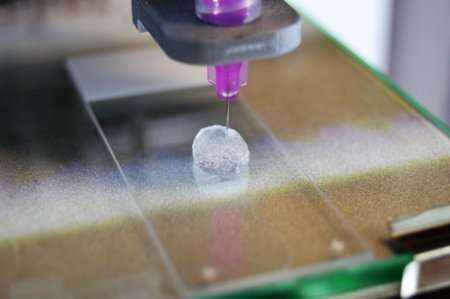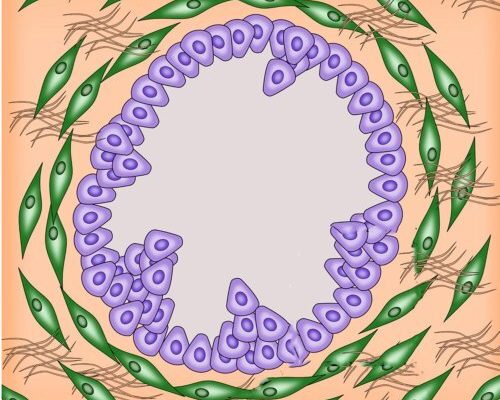
For some types of cancer, the human body itself complicates adequate treatment. Connective tissue and the immune system then build a sort of “defensive wall” around the tumor, through which chemotherapy drugs cannot penetrate. University of Twente researcher Marcel Heinrich mimicked this tumor micro-environment in the lab using 3D modeling and bioprinting. If subsequent lab research results in new ways of reaching the tumor, it could also be possible to reduce the number of tests on animals. Heinrich recently finished his Ph.D. research cum laude.
Pancreatic cancer and glioblastoma, an aggressive brain cancer, are two types of cancer with a bad prognosis. One of the reasons for this is that it is very difficult to intervene due to the micro-environment of the body’s immune system and connective tissue. Chemotherapy has been designed to destroy the tumor, but can’t access the tumor through an environment that inhibits access. And the pancreatic cancer environment is totally different from the one around glioblastoma. Two dimensional (2D) models fail to describe this sufficiently well, which is why Marcel Heinrich modeled the environments in 3D. He also used bio printing techniques to print the environment, with patient data as the input. The basic question is: What is needed for opening up this defensive wall and giving chemo treatment the necessary access?
There is no “one-size-fits-all” solution for a tumor environment. Around pancreatic tumors (PDAC: pancreatic ductal adenocarcinoma), a strong network of fibrous tissue builds up. This is fibrotic stroma that can obstruct the functioning of blood vessels. By contrast, glioblastoma attracts macrophages, a type of white blood cell, that in this case, help the tumor. It may be clear that for each type, a different access strategy is needed. The 3D models of the tumor environment could help reach this goal by experimenting based on data that is trustworthy. Unlike in tissue engineering, the printed miniature pancreas and brain aren’t created for implant. They have a minimum of basic functions to host the tumor in order to evaluate possible strategies for treatment. As the models give the researcher a highly valuable level of freedom to do experiments without using animals, the amount of animal tests can be reduced drastically, says Marcel Heinrich.

Source: Read Full Article
